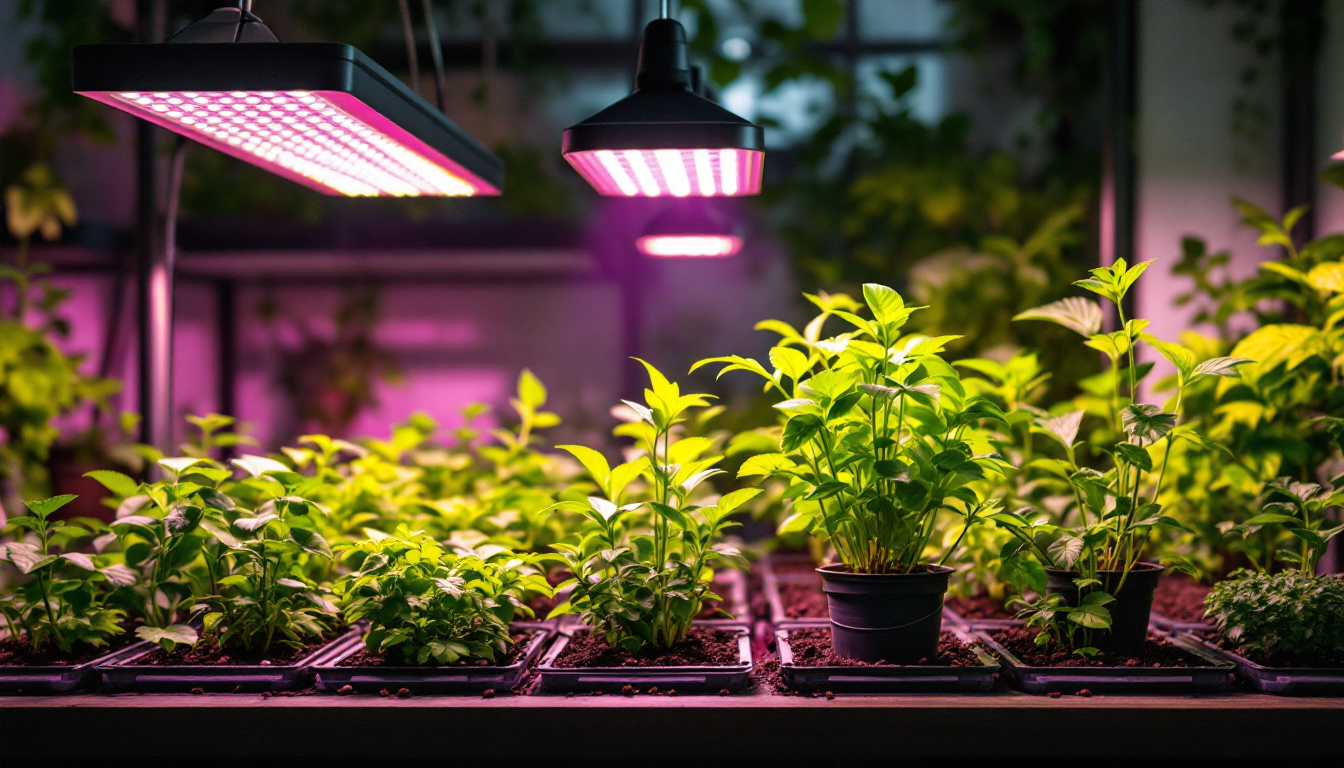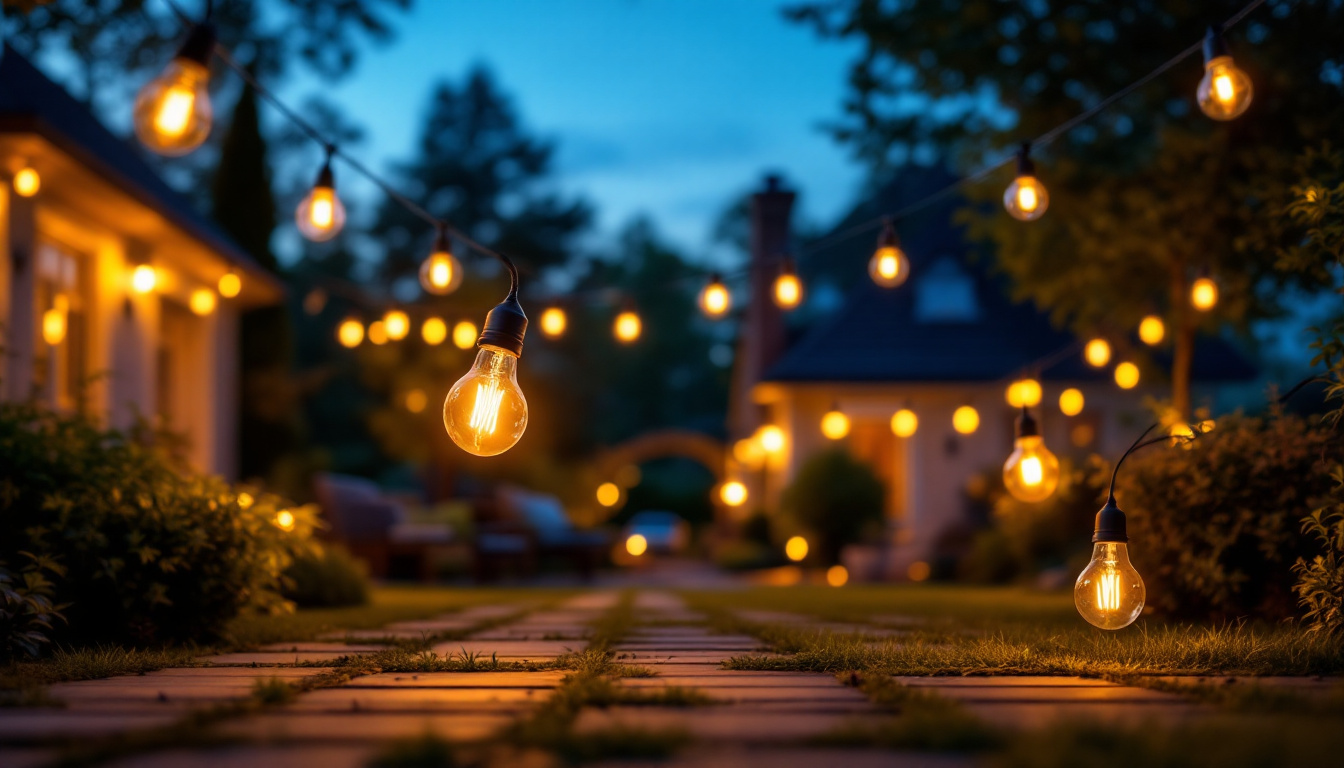
In the ever-evolving world of horticulture and indoor gardening, LED grow lights have emerged as a game-changer. For lighting contractors, understanding the intricacies of these lights is crucial to providing optimal solutions for clients. This article delves into the essential aspects of LED grow lights, their benefits, and considerations for installation, ensuring contractors are well-equipped to meet the demands of modern agricultural practices.
LED grow lights are specialized lighting systems designed to support plant growth by emitting light wavelengths that are most beneficial for photosynthesis. Unlike traditional lighting solutions, LED technology offers a range of advantages that make it increasingly popular among growers.
The functionality of LED grow lights is rooted in their ability to produce specific light spectrums. Plants primarily utilize blue and red wavelengths for photosynthesis, and LED lights can be engineered to emit these specific colors. By adjusting the light spectrum, growers can optimize conditions for various growth stages, from seedling to flowering.
Moreover, LED lights are energy-efficient, converting a higher percentage of electricity into usable light for plants. This efficiency not only reduces energy costs but also minimizes heat output, creating a more stable environment for plant growth. Additionally, many modern LED grow lights come equipped with smart technology, allowing growers to control light intensity and spectrum remotely. This feature is particularly beneficial for indoor gardening setups, where precise control can lead to improved yields and healthier plants.
There are several types of LED grow lights available, each catering to different horticultural needs. Full-spectrum LED grow lights provide a balance of blue, red, and green light, making them suitable for all growth stages. On the other hand, specialized lights focus on specific wavelengths, such as red and blue, to enhance particular phases of growth.
Contractors should also consider the form factor of the lights. Options range from panel lights and bulbs to high-intensity fixtures, allowing for flexibility in installation based on the client’s space and requirements. Furthermore, some LED grow lights are designed with modular capabilities, enabling growers to expand their lighting systems as their gardening needs evolve. This adaptability is especially advantageous for commercial growers who may start with a small operation and scale up over time, ensuring that their lighting solutions can grow alongside their business. Additionally, many LED grow lights are now designed with sustainability in mind, utilizing recyclable materials and offering longer lifespans compared to traditional bulbs, which contributes to a more eco-friendly gardening approach.
The advantages of LED grow lights extend beyond mere efficiency. For lighting contractors, understanding these benefits can help in making informed recommendations to clients.
One of the most compelling reasons to choose LED grow lights is their energy efficiency. Compared to traditional incandescent or fluorescent lights, LEDs consume significantly less power while delivering the same or even greater light output. This efficiency translates into lower electricity bills for growers, making it an attractive option for both small-scale and commercial operations.
Additionally, the longevity of LED lights—often rated for tens of thousands of hours—means fewer replacements and reduced maintenance costs over time. This durability is a significant selling point for contractors aiming to provide long-term solutions. Furthermore, many LED systems come with adjustable spectrums, allowing growers to tailor light conditions to specific plant growth stages, optimizing photosynthesis and enhancing crop yields.
Heat management is another critical factor in indoor gardening. Traditional grow lights, particularly high-intensity discharge (HID) lamps, generate substantial heat, necessitating additional cooling systems to maintain optimal temperatures. In contrast, LED grow lights produce minimal heat, allowing for closer placement to plants without the risk of scorching.
This characteristic not only simplifies the setup but also enhances the overall growing environment, promoting healthier plant development. For contractors, this means fewer complications and a more straightforward installation process. Moreover, the reduced heat output can lead to a more stable indoor climate, which is essential for maintaining humidity levels and preventing heat stress in sensitive plants. This creates an ideal atmosphere for diverse plant species, enabling growers to experiment with a wider variety of crops, from delicate herbs to robust fruiting plants.
While LED grow lights offer numerous benefits, proper installation is essential to maximize their effectiveness. Lighting contractors must consider several factors to ensure optimal performance and client satisfaction.
The placement of LED grow lights is crucial for achieving uniform light distribution. Contractors should assess the dimensions of the growing area and the specific light requirements of the plants being cultivated. Overlapping light coverage can help eliminate dark spots and ensure that all plants receive adequate light.
Additionally, adjustable mounting systems can provide flexibility, allowing growers to reposition lights as plants grow taller or as the seasons change. This adaptability is an essential feature that contractors should highlight to clients. Moreover, understanding the light spectrum needs of different plant species can further refine placement strategies. For instance, seedlings may require more blue light for vegetative growth, while flowering plants benefit from increased red light. By tailoring the light placement to the specific growth phases of the plants, contractors can significantly enhance yield and quality.
LED grow lights require a stable power supply to function effectively. Contractors must ensure that the electrical system can handle the load, especially in larger installations with multiple fixtures. Proper wiring and circuit management are vital to prevent overloads and ensure safety.
Furthermore, integrating timers and dimmers can enhance the functionality of the lighting system. Timers can automate light cycles, mimicking natural daylight patterns, while dimmers allow for adjusting light intensity based on the growth stage of the plants. In addition to these features, implementing surge protectors can safeguard the lighting system against power spikes, which is particularly important in areas prone to electrical fluctuations. Educating clients about the importance of regular maintenance checks on the electrical components can also prevent future issues, ensuring that the grow lights operate efficiently over time.
For lighting contractors, educating clients about LED grow lights is as important as the installation itself. Providing comprehensive guidance can enhance customer satisfaction and foster long-term relationships.
Clients may not be familiar with the concept of light cycles, which are critical for plant growth. Educating them on the importance of photoperiods—how long plants should be exposed to light and darkness—can significantly impact their success. For instance, some plants thrive under 18 hours of light and 6 hours of darkness, while others may require a 12/12 cycle for flowering.
By explaining these concepts, contractors can empower clients to make informed decisions about their lighting setups, leading to healthier plants and better yields. Additionally, discussing the role of different light spectrums can further enhance their understanding. For example, blue light is essential during the vegetative stage, promoting leaf growth, while red light is crucial during flowering, encouraging bud development. Providing clients with a clear understanding of how these spectrums influence plant growth can help them optimize their setups for specific crops, ultimately leading to a more fruitful harvest.
Even the best lighting systems require maintenance. Contractors should provide clients with guidelines on cleaning LED fixtures, checking connections, and monitoring performance. Regular maintenance can extend the lifespan of the lights and ensure consistent performance.
In addition, offering troubleshooting support can enhance the contractor-client relationship. Being available to address concerns or issues that arise can build trust and encourage clients to return for future projects. It can be beneficial to create a simple troubleshooting guide that clients can refer to, detailing common issues such as flickering lights or uneven growth patterns. This guide could include tips on adjusting light heights and ensuring proper ventilation, which are often overlooked but crucial for maintaining optimal growing conditions. Furthermore, encouraging clients to keep a log of their plants’ responses to different lighting conditions can help them become more attuned to their plants’ needs, fostering a deeper connection to their growing experience.
The landscape of LED grow lights is continually evolving, with new technologies and innovations emerging regularly. Staying informed about these trends can position lighting contractors as industry leaders.
One of the most exciting trends is the integration of smart technology into LED grow lights. Smart lighting systems can be controlled remotely via smartphones or computers, allowing growers to adjust settings from anywhere. This capability not only adds convenience but also enables precise control over light cycles and intensity.
Contractors should consider recommending smart lighting solutions to clients interested in maximizing their growing potential. These systems can be particularly beneficial for commercial growers managing large operations.
As research continues to uncover the specific light requirements of various plant species, advancements in spectrum technology are likely to emerge. Future LED grow lights may feature customizable spectrums, allowing growers to tailor light output to the specific needs of their plants at different growth stages.
This level of customization could lead to even greater efficiencies and higher yields, making it an exciting area for contractors to explore and discuss with clients.
LED grow lights represent a significant advancement in horticultural lighting, offering numerous benefits that can enhance plant growth and reduce energy costs. For lighting contractors, understanding the technology, installation considerations, and future trends is essential for providing clients with effective solutions.
By staying informed and offering comprehensive support, contractors can position themselves as trusted partners in their clients’ growing endeavors. As the demand for efficient and effective lighting solutions continues to rise, embracing the potential of LED grow lights will be key to thriving in the competitive landscape of horticultural lighting.
Ready to elevate your lighting game with the latest LED grow light technology? Look no further than LumenWholesale, where we specialize in providing lighting contractors with superior, spec-grade lighting products. Our commitment to quality and affordability ensures that you can access the best LED grow lights without breaking the bank. Say goodbye to local distributor markups and hello to our unbeatable wholesale prices, complete with the convenience of free shipping. Don’t compromise on quality or value—choose LumenWholesale for your next project and experience the difference. Wholesale Lighting at the Best Value is just a click away.

Discover how UV light boxes can transform your lighting business with increased efficiency and profitability.

Explore the essentials of dusk to dawn outdoor light bulbs in this comprehensive guide tailored for lighting contractors.

Discover how the right electrical equipment tools can significantly boost profits for lighting contractors.

Discover the future of illumination with our comprehensive guide on lighting automation.